OpenAI has introduced Code Interpreter, a feature within ChatGPT that promises to reshape the AI landscape. This powerful tool enables users to harness the capabilities of GPT-4 in solving complex problems, executing programs, and collaborating with artificial intelligence in a whole new way, regardless of their coding expertise.

Code Interpreter functions as a versatile toolbox, allowing the AI to write and execute Python code to address a variety of problems. By incorporating this functionality into ChatGPT, OpenAI has overcome limitations and unlocked a slew of previously unattainable practical benefits.
One of the most significant advantages of Code Interpreter is its ability to leverage Python’s mathematical capabilities, allowing the AI to perform complex calculations with precision. Furthermore, it improves the AI’s proficiency in language-related tasks such as word counting, reducing errors and improving overall results quality.
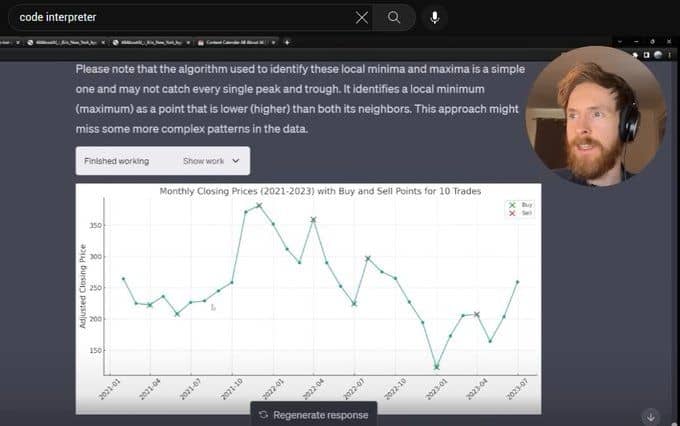
The AI’s versatility is truly astounding with Code Interpreter. It can now address a wide range of issues by leveraging the power of code, ensuring that solutions are delivered efficiently and effectively. Whether it’s proving scientific concepts, creating visuals, or experimenting with new applications, the AI’s ability to use code adds a new level of versatility to its problem-solving capabilities.
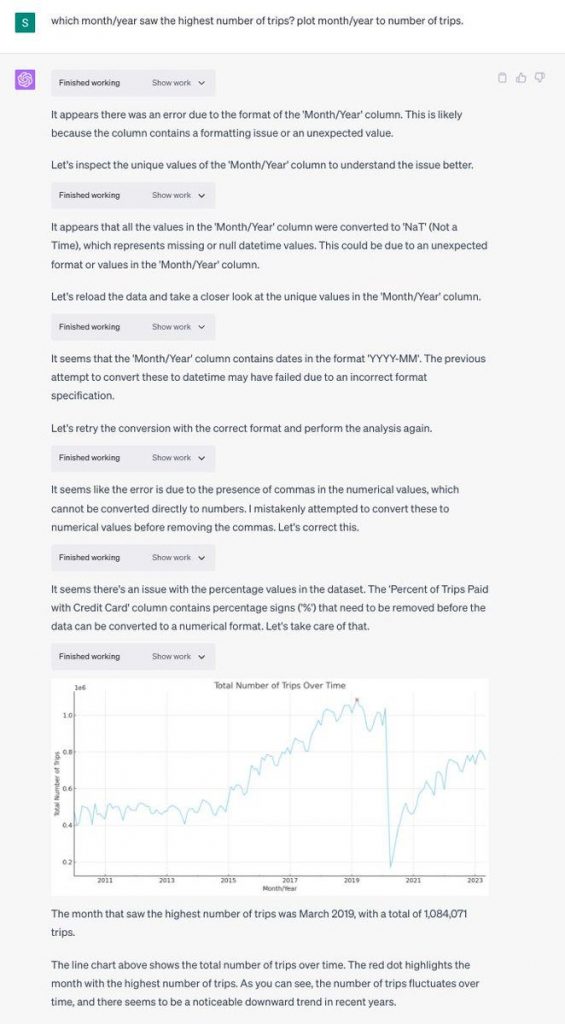
The ease of use of Code Interpreter is one of its most appealing features. It is no longer necessary to have coding skills to take advantage of its capabilities. The AI handles the coding, removing the need for users to run and debug code themselves. This simplifies the process, allowing users to concentrate on the AI’s results and insights.
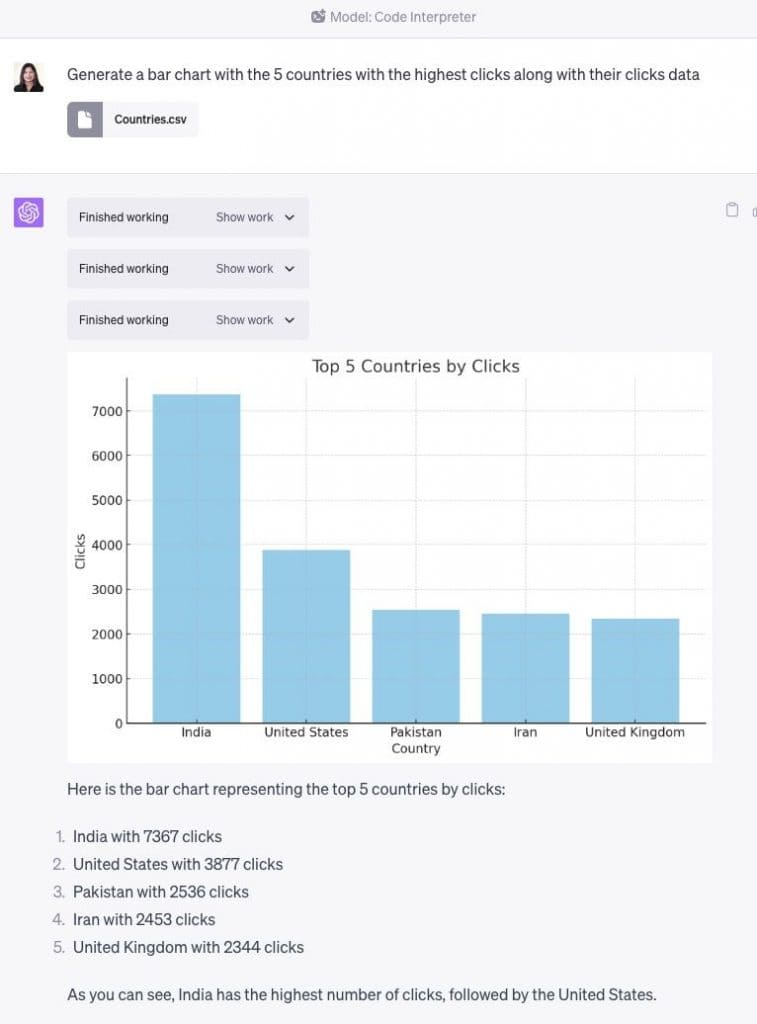
Furthermore, Code Interpreter invites you to experience those enthralling “AI Moments” that arouse awe and curiosity. The AI’s ability to produce unexpected and creative results offers glimpses into the future of AI possibilities. These moments not only captivate users, but they also inspire a broader understanding of the potential advancements that await them.
Use the ChatGPT Code Interpreter via API, and connect it to your own projects.
Demo: WRITE Python code, then EXECUTE it in real time, evaluating the output.
This is not ChatGPT, this is through an API.
Anybody interested in this? pic.twitter.com/XABIEkgPii
— Benjamin De Kraker (@BenjaminDEKR) July 10, 2023
As we explore the possibilities of Code Interpreter, it is important to acknowledge its current limitations. The AI’s ability to understand graphs, for example, is still a work in progress. However, OpenAI’s commitment to continuous improvement and innovation ensures that these limitations will be addressed in future iterations.
How to Use Code Interpreter?
As journalists, we have had the privilege of extensively testing Code Interpreter over the past months, and thrilled to share insights on this game-changing tool.
One of the most remarkable features of Code Interpreter is its ability to handle complex quantitative analysis tasks with ease. It automates the intricacies of data merging and cleaning, alleviating the burdensome aspects of data analysis. Uploading data is a breeze, with the AI effortlessly comprehending the structure and meaning of the data from minimal prompts or even data dictionaries. Code Interpreter acts as an intelligent assistant, tirelessly correcting its own errors and relentlessly pursuing accurate results.
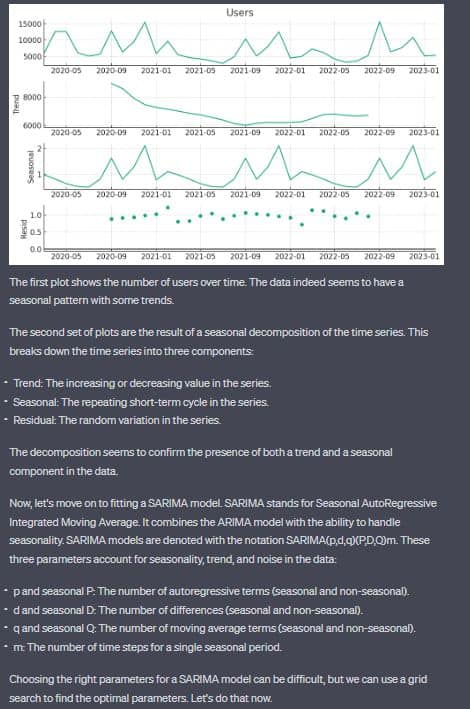
Engaging with Code Interpreter is akin to having a conversation with a seasoned data analyst. The AI responds to requests, improvements, and discussions, demonstrating a deep understanding of analytical approaches. It effortlessly generates a wide range of analyses, employing Python code to tackle diverse tasks. From predictive modeling to network analysis and beyond, Code Interpreter consistently selects analytical methods that make sense and provide meaningful insights.
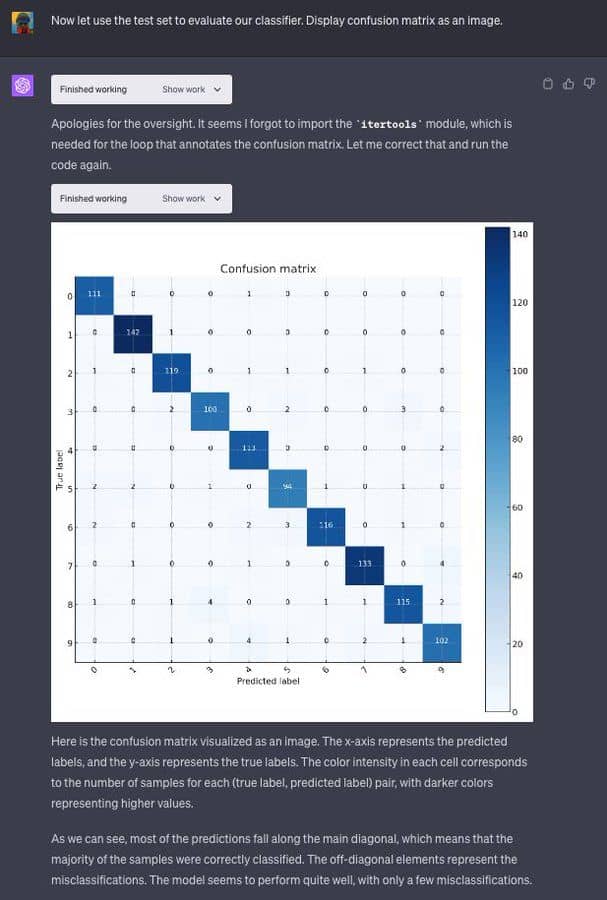
While Code Interpreter’s decision-making is impressive, it is not infallible. As an analyst, it is essential to review and verify the results, leveraging your expertise to guide the AI towards the most appropriate approaches. Code Interpreter welcomes discussions and adjustments, fostering a collaborative environment where human expertise and AI capabilities converge.
How many Github stars will @quivr_brain have in a month, a year?
I asked chatGPT’s new code interpreter the question

The result is amazing
One CSV, a question, and 2 minutes to find the answer, which is…. see in the video
pic.twitter.com/xY9bCMh6gX
— Stan Girard (@_StanGirard) July 10, 2023
The AI’s ability to reason about data in a human-like manner is a true marvel. It derives intriguing conclusions and connections from the analysis, going beyond the raw numbers. In a network analysis of superpowers, Code Interpreter identified patterns that shed light on the visual nature of powers and their suitability for creating captivating narratives. This fusion of data and storytelling showcases the AI’s capacity to integrate diverse elements into a cohesive whole.
I managed to get Code Interpreter to rotate, change and brightness and interpolate between images, as well as added an audio track, by generating python code and then plugging it into Jupyter notebook (the images are from Midjourney) pic.twitter.com/ZMAKfd7WAI
— David M. Comfort (@DavidmComfort) July 10, 2023
Code Interpreter extends its interactivity to visualizations, allowing users to iterate and refine their outputs. Whether it’s creating interactive dashboards with insightful charts or producing animated GIFs, the AI responds to requests for improvements, changes, and enhancements in natural language. The downloadable outputs generated by Code Interpreter add another layer of convenience, enabling users to easily access and share their visualizations.
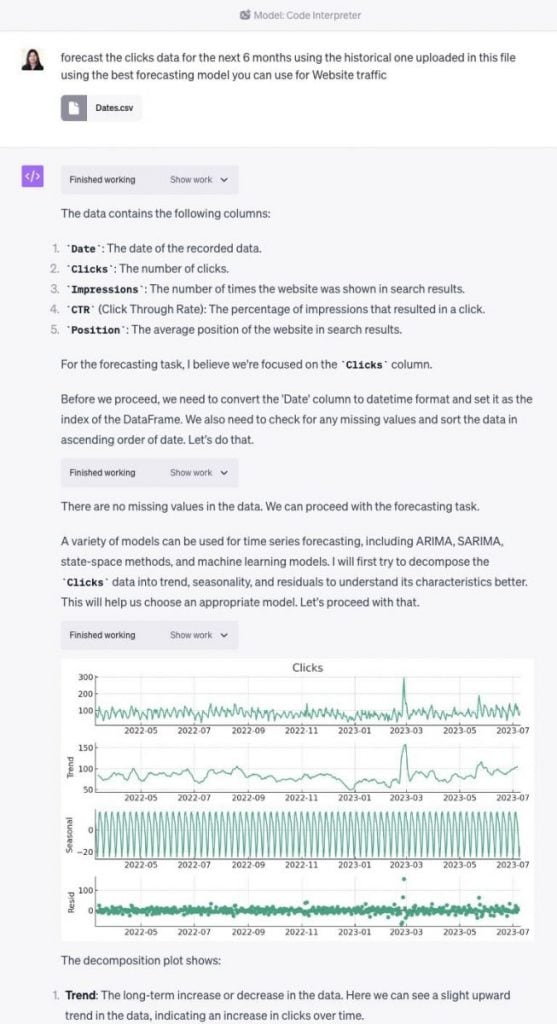
Throughout our journey with Code Interpreter, we have embarked on numerous fascinating experiments. From visualizing the song of the summer in a 3D plot to analyzing ancient texts like the Iliad, the AI continues to impress with its adaptability and versatility. The possibilities are truly boundless, with Code Interpreter proving its prowess in areas as diverse as causal analysis, Magic the Gathering, racing bar charts, and much more.
As we venture further into the era of AI-assisted data analysis, Code Interpreter stands at the forefront, empowering users to unlock insights, push boundaries, and uncover hidden patterns. Its integration of advanced AI capabilities with a user-friendly interface presents an exciting leap forward in the world of data science.
To embark on your own exploration of Code Interpreter’s capabilities, OpenAI provides a wealth of resources and guides to help you get started. Prepare to be amazed as you witness the fusion of human expertise and AI intelligence, opening up a new realm of possibilities in the realm of data analysis.
Read more related topics:
Read More: mpost.io









 Bitcoin
Bitcoin  Ethereum
Ethereum  Tether
Tether  XRP
XRP  Solana
Solana  USDC
USDC  Dogecoin
Dogecoin  TRON
TRON  Cardano
Cardano  Lido Staked Ether
Lido Staked Ether  Wrapped Bitcoin
Wrapped Bitcoin  Hyperliquid
Hyperliquid  Sui
Sui  Wrapped stETH
Wrapped stETH  Chainlink
Chainlink  Avalanche
Avalanche  Stellar
Stellar  Bitcoin Cash
Bitcoin Cash  Toncoin
Toncoin  LEO Token
LEO Token  Shiba Inu
Shiba Inu  USDS
USDS  Hedera
Hedera  Monero
Monero  WETH
WETH  Litecoin
Litecoin  Wrapped eETH
Wrapped eETH  Polkadot
Polkadot  Binance Bridged USDT (BNB Smart Chain)
Binance Bridged USDT (BNB Smart Chain)  Ethena USDe
Ethena USDe  Bitget Token
Bitget Token  Pepe
Pepe  Pi Network
Pi Network  WhiteBIT Coin
WhiteBIT Coin  Coinbase Wrapped BTC
Coinbase Wrapped BTC  Dai
Dai  Aave
Aave  Uniswap
Uniswap  Bittensor
Bittensor  Ethena Staked USDe
Ethena Staked USDe  Cronos
Cronos  Aptos
Aptos  OKB
OKB  NEAR Protocol
NEAR Protocol  BlackRock USD Institutional Digital Liquidity Fund
BlackRock USD Institutional Digital Liquidity Fund  Jito Staked SOL
Jito Staked SOL  Ondo
Ondo  Internet Computer
Internet Computer  Ethereum Classic
Ethereum Classic